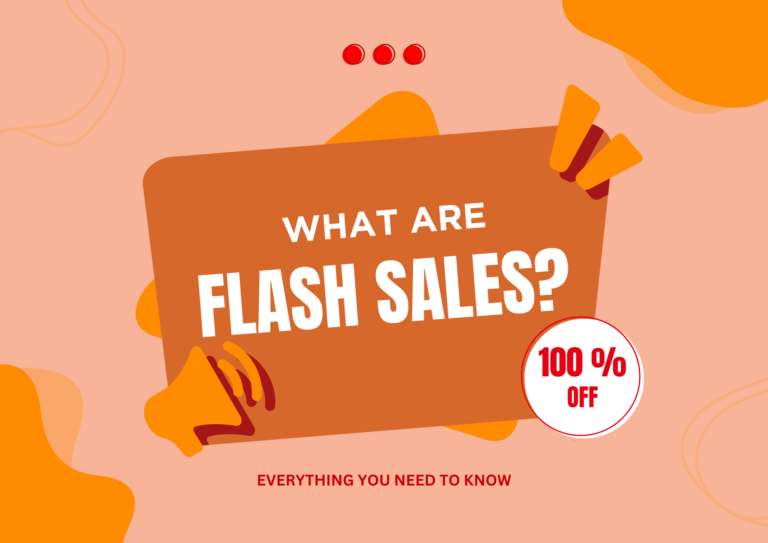Everything You Need to Know About Flash Sales
If you run an online shop, then you have to know about flash sales!
Flash sales are an exciting tactic for brands who are looking to increase their sales or clear out their inventory. This also attracts new customers and helps with brand awareness.
What is a flash sale exactly, and how can it help retailers and customers? What are the ways to have a successful flash sale launch?
In this in-depth blog, we are going to delve deeply into the realm of flash sales and provide strategies, advice, and insights for both retailers and consumers.
What Are Flash Sales?
A flash sale is a marketing campaign that offers significant discounts on products or services for a limited time. These sales are typically announced with little to no notice beforehand and last anywhere from a few hours to several days. Flash sales are known for their substantial discounts, often up to 50% off regular prices, which gives customers a sense of urgency and exclusivity.

The Psychology Behind Flash Sales
Flash sales derive much of their effectiveness from psychological concepts like the ones here:
-Scarcity: Time constraints and limited supplies induce FOMO, or the fear of missing out, which drives hasty purchasing decisions.
-Urgency: Countdown timers and real-time stock updates increase the pressure and speed up the making of decisions.
-Exclusivity: Allowing access to specific groups (members only, etc) can make customers feel special and encourage them to engage more.
How to Start Running a Flash Sale?
Running a flash sale can be an exhilarating way to boost revenue, clear out inventory, and attract new customers to your business. However, for a flash sale to be successful, it needs to be properly organized and executed. There are several essential steps involved in planning a flash sale, from inception to conclusion. Let us look at how you can create a successful flash sales campaign:
Step 1: Set Specific Goals
The first step is always about understanding the objectives and goals behind setting up your campaigns. Goals can include anything from bringing in new business and raising brand awareness to getting rid of outdated inventory and boosting immediate sales. Having specific goals will help you make better decisions during the planning and execution stages.
Step 2: Determine who your audience is
It is important to know who you are attempting to reach. What products you offer and how you market your flash sale will be influenced by your target audience. Think about the clients you currently serve and whether you want to draw in the same kind of clients or a different one.
Step 3: Choose the Correct Products
Not all products are appropriate for a one-day sale. Select products that are well-liked or in great demand, have a sizable amount of inventory on hand, or are seasonal and require clearance. Make sure the products you choose suit your target market and your goals.
Step 4: Set Prices and Discounts
Select the discounts that will be available during the flash sale. Achieving a balance between enticing discounts for clients and preserving a profit margin for your company is critical. To optimize profits and promote larger purchases, think about using tiered discounts or dynamic pricing schemes.
Step 5: Choose the Duration
Flash sales typically run for a few hours to several days, at most. Your goals, the products you offer, and your comprehension of your customer’s purchasing habits will all determine the ideal length of time. Extended sales periods may offer more opportunities for participation, but shorter sales periods may instill a sense of urgency.
Step 6: Create a marketing plan
Your flash sale’s success depends on having a strong marketing plan. To advertise the sale, use a combination of pay-per-click advertising, social media, email marketing, and your website. Create a message that emphasizes the offer’s exclusivity and urgency. To create anticipation, begin hinting at the sale a few days beforehand.
Step 7: Monitor the Sale in Real-Time
Watch performance immediately after your flash sale launches. Watch inventory levels and be ready to handle any technical issues. Maintain excitement and momentum by interacting with customers on social media and via customer support channels.
Step 8: Analyze and Learn
Once the sale is over, evaluate its performance in relation to your goals. Examine data like income, profit margins, traffic, conversion rates, and the number of new clients acquired. To determine what was successful and what needs improvement, get input from both customers and employees. Make adjustments to your sales strategy based on these insights.
To sum up, flash sales are an effective tool for businesses and a win-win situation for customers. Flash sales are an exciting strategy that both retailers and consumers can take advantage of by learning the tactics that work and the mistakes to avoid. Follow these steps and create your very successful flash sales campaign!
